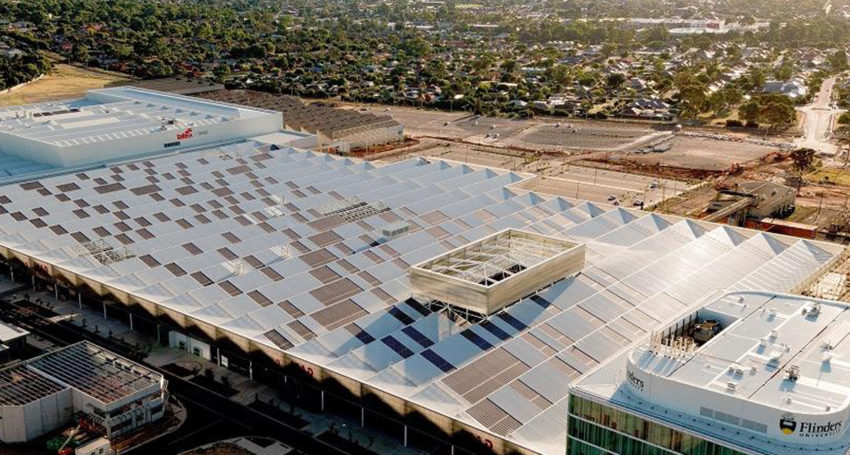Construction work begins on Adelaide green hydrogen plant
- December 13, 2019
- Posted by: administrator
- Category: Engineering, Technology & Innovation, Australasia

Construction work has begun on a pioneering hydrogen production facility in Adelaide, which will play a major role in South Australia’s bid to become a global leader in certified green hydrogen.
Australian Gas Networks has begun construction of its AU$11.4 million HyP SA hydrogen production facility at the Tonsley Innovation District in Adelaide – the first Australian demonstration project of its scale and size.
Using a 1.25 MW proton exchange membrane (PEM) electrolyser, renewable electricity will be used to split water into oxygen and hydrogen gas.
The HyP SA facility is expected to start renewable hydrogen production around mid-2020 – small quantities of renewable hydrogen will be produced and blended with natural gas. The gas will then be supplied to 710 customers in the adjacent suburb of Mitchell Park via the existing local natural gas distribution network.
The start of construction work coincides with the release of a report by national science agency, CSIRO, that maps the research steps Australia must take to realise a potential 7600 jobs and $11 billion a year by 2050 from the burgeoning hydrogen industry.
Adelaide-based AGN is part of Australian Gas Infrastructure Group (AGIG) and received a $4.9 million grant from the South Australian Government’s Renewable Technology Fund to build and operate the project.
AGN Chief Executive Officer Ben Wilson said the HyP SA project represented the first step towards decarbonising South Australia’s gas networks.
“Commercial hydrogen production is achievable and can decarbonise Australia’s energy mix while at the same time accessing export markets. Developing the hydrogen economy will also play a key role and the momentum around hydrogen is building with burgeoning research and development underway.
“When burnt, hydrogen does not release any carbon emissions, only water and heat so it is essentially just another gas we can use in place of, or blended with, natural gas to provide energy and heat.
South Australia is already a world leader in wind, solar and battery storage to the point where excess renewable energy is often shed during peak production periods.
The South Australian Government released its Hydrogen Action Plan in September in a bid to use cheap renewable energy to generate hydrogen, which can be used as fuel or to generate electricity at a later time and place.
Other key hydrogen projects utilizing State Government funding underway in South Australia include:
- H2U is developing a 30MW water electrolysis facility near Port Lincoln using wind and solar to generate up to 18,000 tonnes of green ammonia a year to supply local agriculture and industrial sectors. The plant will also feature two 16 MW open-cycle gas turbines operating 100 per cent on hydrogen at the site to provide electricity generation to the grid during periods of low wind or solar output.
- An $8.7 million facility at the University of South Australia’s Mawson Lakes campus incorporating a solar installation, flow batteries, a hydrogen fuel storage cell stack and thermal energy storage to demonstrate the value of hydrogen storage paired with other new storage technologies.
- Neoen Australia is investigating the introduction of a 50MW hydrogen super hub to produce about 25,000kg of hydrogen a day at its proposed Crystal Brook Energy Park in the Mid North of the South Australia.
Australia’s current hydrogen research footprint includes 23 institutions actively exploring hydrogen in various technology and research areas as well as another 23 hydrogen-specific demonstration projects and research facilities around Australia.
CSIRO Research Director Dr Patrick Hartley said the national science agency was on a mission to bring together industry, government and other research organisations to fast-track emerging hydrogen technologies.
“This isn’t limited to the domestic industry development – we’ll link Australian expertise with international projects,” Dr Hartley said.
